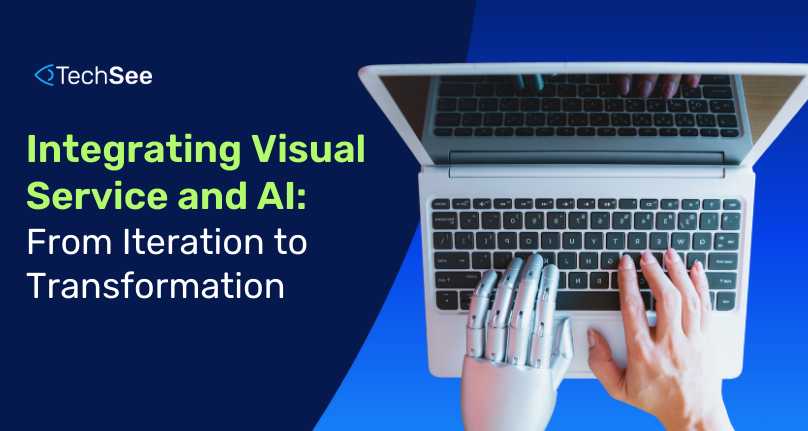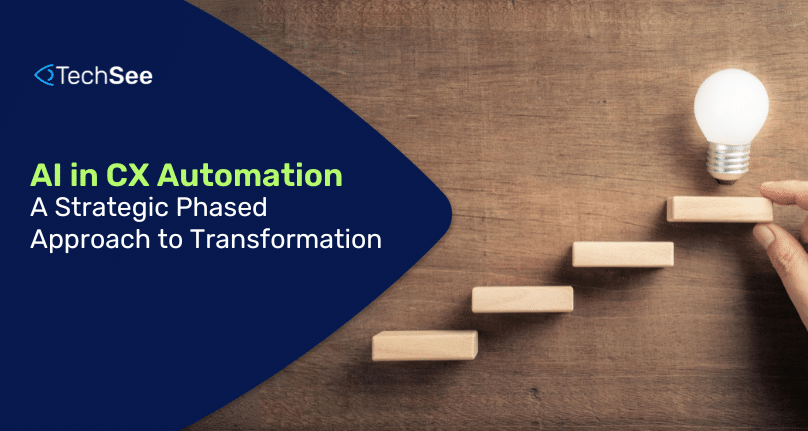Contents
In the rapidly evolving landscape of customer experience (CX), businesses are constantly seeking innovative ways to enhance efficiency, reduce costs, and foster customer loyalty. The integration of visual service and AI has emerged as a powerful solution, revolutionizing how companies interact with their customers and streamline their operations.
Here, we will explore the transformative impact of visual service and AI, drawing insights from real-world examples and highlighting key strategies for successful implementation.
For a more detailed analysis, be sure to download our comprehensive white paper and industry report.
Common CX Pain Points
Across various industries, businesses encounter recurring challenges in their customer experience operations. These CX pain points can hinder efficiency, escalate costs, and negatively impact customer satisfaction. Some of the most prevalent issues include:
- High Call Volumes and Complex Troubleshooting: Industries with intricate products or services often grapple with a deluge of customer inquiries and complex troubleshooting processes. This can strain support teams, lead to long wait times, and increase the risk of customer churn.
- High Return Rates and Setup Frustration: Sectors dealing with physical or digital products often face high return rates due to customer difficulties during setup or initial use. This not only impacts revenue, but also erodes customer confidence.
- Scalability and First-Call Resolution: Industries with a wide array of products or services require scalable support solutions that can efficiently handle diverse customer needs while minimizing truck rolls. Achieving high first-call resolution rates is crucial for customer satisfaction and cost optimization.
- System Reliability and Customer Trust: For industries where product or service reliability is paramount, maintaining customer trust is essential. Minimizing disruptions and providing prompt, effective support are key to building and retaining customer loyalty.
The Power of Visual Engagement
Visual service, powered by AI, enables companies to transcend the limitations of traditional communication channels. By incorporating visual elements such as images, videos, and augmented reality (AR) into customer interactions, businesses can provide more personalized and effective support.
For example, a customer struggling to assemble or set up a new product can receive step-by-step visual guidance, eliminating the need for lengthy explanations or technician dispatches. This not only improves the customer experience, but also reduces operational costs and even minimizes environmental impact by keeping field agents’ cars and trucks off the road.
AI-Driven Efficiency and Accuracy
The integration of AI with visual service further amplifies its benefits. AI algorithms can analyze visual data in real time, enabling faster and more accurate issue resolution. For example, an AI-powered system can quickly identify a faulty component in a machine by analyzing a customer-submitted image, eliminating the need for manual inspection. This streamlines the troubleshooting process, reduces downtime, and improves overall efficiency.
Iterative Improvement for Optimal Results
The successful integration of visual service and AI requires an iterative approach. Companies should start by identifying key pain points in their customer service processes and exploring how visual and AI technologies can address them. It is crucial to involve stakeholders from different departments, including customer service, IT, and product development, to ensure a holistic and user-centric solution.
Continuous monitoring and analysis of performance metrics are essential for optimizing the implementation of visual service and AI. By gathering feedback from customers and employees, companies can identify areas for improvement and make necessary adjustments. This iterative process fosters a culture of innovation and ensures that the technology evolves to meet the changing needs of the business and its customers.
TechSee’s Sophie AI: Empowering Iterative Improvement
TechSee’s Sophie AI platform offers a powerful solution to common CX pain points. By enabling companies to leverage visual AI in an iterative and scalable manner, Sophie empowers businesses to:
- Streamline Troubleshooting: Visual AI guides customers through complex processes, reducing the need for lengthy explanations and improving first-call resolution rates. This leads to shorter call handling times and increased agent productivity.
- Simplify Setup and Reduce Returns: Interactive visual guidance simplifies product setup and minimizes customer frustration, leading to lower return rates and improved customer satisfaction.
- Scale Support Efficiently: AI-powered virtual assistants handle routine inquiries, freeing up human agents to focus on complex issues. This improves scalability and ensures consistent, high-quality support across a wide range of products or services.
- Enhance System Reliability and Trust: Proactive issue detection and remote diagnostics enable companies to address problems before they escalate, improving system reliability and strengthening customer trust.
Transformation Through Collaboration
The integration of visual service and AI is not just a technological endeavor; it requires a shift in organizational mindset and collaboration across departments. To achieve true transformation, companies need to break down silos and foster a culture of knowledge sharing and cross-functional collaboration.
Key Performance Indicators (KPIs) play a crucial role in aligning different departments towards a common goal. By establishing clear and measurable objectives, companies can track progress and ensure that everyone is working towards the same outcomes. Regular communication and feedback loops are essential for maintaining alignment and addressing any challenges that may arise.
Real-World Success with Sophie AI
TechSee’s visual AI has delivered significant results for businesses across various industries:
- Telecommunications: Reduced truck rolls by 45%, improved CSAT by 51%, and increased NPS by 47%.
- Smart Home: Decreased product returns by 25% and improved customer satisfaction by 18%.
- Electronics: Increased first-call resolution rates by 30% and reduced call handling times by 25%.
- Home Security: Minimized technician dispatches by 35% and enhanced customer satisfaction by 20%.
These statistics demonstrate the transformative impact of visual AI in addressing common CX pain points, driving tangible business outcomes, and unlocking new levels of efficiency, customer satisfaction, and profitability.
The Road Ahead
The integration of visual service and AI is still in its early stages, but its potential is undeniable. As technology continues to advance, we can expect to see even more innovative and impactful applications emerge. Companies that embrace this transformation will be well-positioned to deliver exceptional customer experience, streamline their operations, and gain a competitive edge.
The journey from iteration to transformation requires a commitment to innovation, collaboration, and continuous improvement. By leveraging the power of visual service and AI, businesses can unlock new levels of efficiency, customer satisfaction, and sustainability, paving the way for a brighter future.
Ready to increase customer loyalty and reap the financial rewards of visual AI? Download our white paper and industry report today to uncover the full potential of these technologies for your business.







